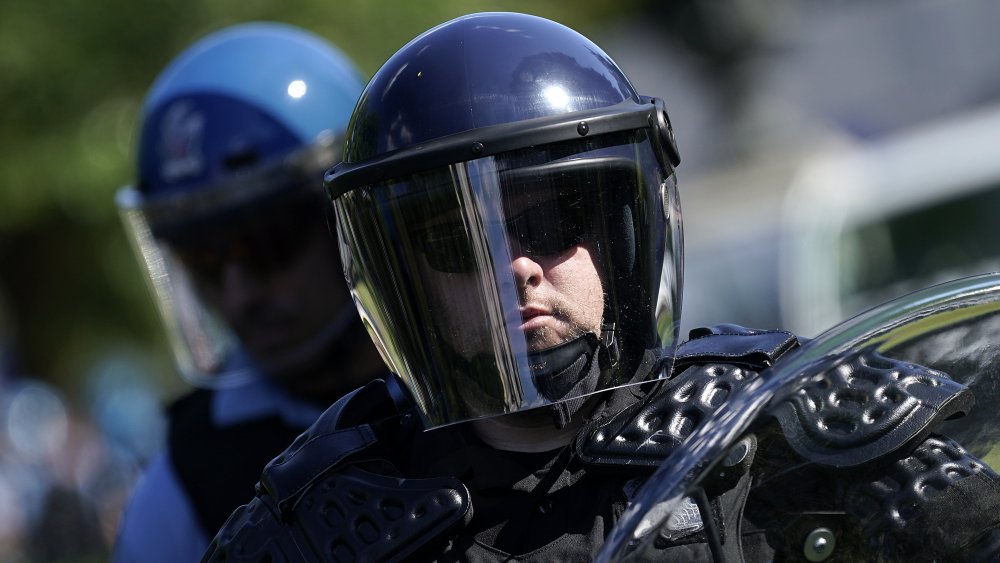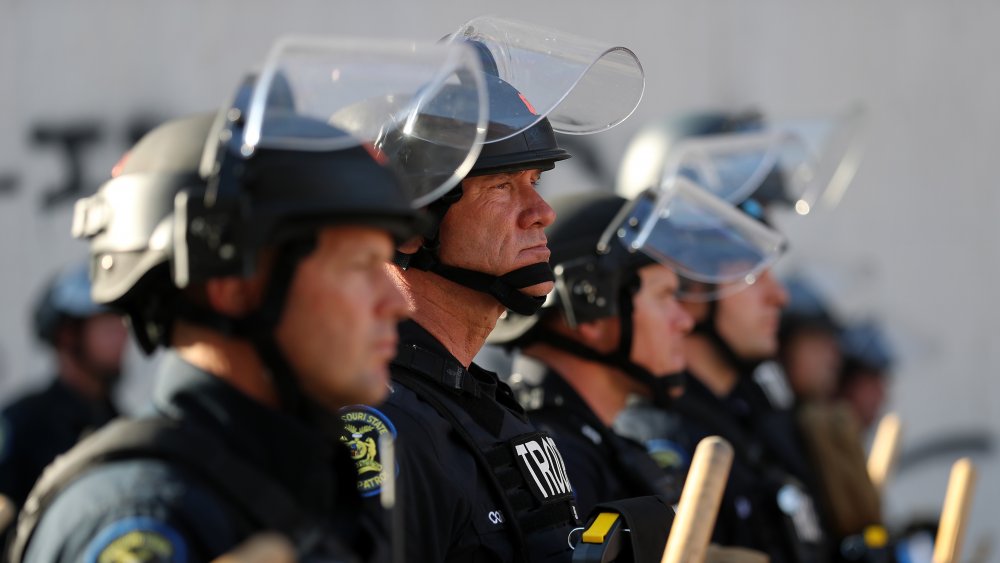The Truth About Rubber Bullets
Rubber bullets were developed by the British military in the 1970s to respond to civil unrest in Northern Ireland. According to Time magazine, they descend from a line of law enforcement gear that stretches back to non-lethal devices such as the truncheon developed in Victorian England, and even earlier in 1880's Singapore when police fired wooden broom handles at rioters, as per Wired magazine. Wooden projectiles, however (made from teak) were prone to splinters, and so an alternative was needed.
Referred to as "kinetic impact projectiles," rubber bullets are composed of a metal core encased by a rubber shell (later changed to plastic to minimize injuries). They're supposed to deliver concussive blows to the body, rather than shred muscle tissue and internal organs like regular bullets. They are intended to subdue crowds and suppress individuals rather than maim and kill.
However, from the get-go it was apparent that this form of rather whimsically-described "non-lethal pacification" was prone to injuring people far more than expected. At the time of their original use, many people suffered fatal injuries, especially children. In recent months, victims of rubber bullets have reported severe injuries, including loss of eyes. Among them, as reported by NBC, is a San Diego grandmother now in a coma after being struck by a rubber bullet in the head and bleeding out on the pavement.
In fact, the use of rubber bullets was discontinued in the UK 30 years ago for these reasons. Only certain countries, such as the US, Israel, and Russia, as chronicled by the Guardian, still permit their use under certain circumstances.
Lost eyes, broken bones, ruptured organs
In addition to firsthand accounts, numerous studies have been conducted on the dangers of such "non-lethal" projectiles. One doctor described, as documented in the Washington Post, treating an individual with an exposed jaw bone and a rubber bullet embedded in the soft flesh of his face. A longterm study by the British Medical Journal from 1990 – 2017 found that 50 people out of approximately 1900 died from being struck by rubber bullets, while 300 suffered permanent disabilities. Best case scenario: rubber bullets (they still have conical heads) penetrate the skin a bit even through clothing, and leave massive, painful welts that can make it difficult to even walk or breathe.
Even with perfect aim, rubber bullets would be extremely dangerous. But from a distance, in a high-stress situation full of chaos and distractions, shooting into a crowd of people is exceedingly risky even for an extremely accurate officer. Unbelievably, then, police are not required to document the use of rubber bullets, unlike regular bullets, as cited by USA Today. Additionally, in the US, as stated in the Palm Beach Post, there is no national standard for the deployment and use of rubber bullets. In fact, even just the use of such firearms could constitute a breach of international law, as reported by The Washington Post, if their use is not considered proportional to the circumstances within which they're used.
At the very least, it's clear that rubber bullets should be used as minimally as possible, and be held up to close scrutiny and better tracking. Otherwise, law enforcement runs the risk of injuring, maiming, and even murdering, by yet another means, the people that it claims to protect as a part of its fundamental charter.

